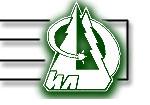
Laboratory of Ecophysiology of Permafrost Systems
 |
V.N. Sukachev Institute of Forest Laboratory of Ecophysiology of Permafrost Systems |
|
|
Study Site Tura
Location: 64° N 100° E
Parent material: Basalts (T1), Siberian traps complex (248 mln a)
Soils Soils (USDA Soil taxonomy, 1998): mostly Turbic Haplic Cryosols (Reductaquic), partly thixotropic
Toeslope: Typic Haplorthels and Sphagnic Fibristel Vegetation:
Overstory (trees): Larix gmelinii (>95% of territory), Picea obovata (rare), Pinus sibirica (rare) and Betula pubenscens (after disturbance).
Spruce and Siberian pine occurs on well-drained south-facing slopes and alluvial soils in stream valleys and river banks. Birch appears after fires on hill tops.
All tree stands are regenerating after ground fires driving composition, productivity and carbon stock of stands. Fire return interval is 20-200 years (ca. 90 years mean).
Landscapes
Forests on flat areas (<250 m a.s.l.)
“Drunk” forests on North-facing slope (Photo by N. Gentsch)
Forests on South-facing slope
Plateaus (>500 m a.s.l.)
Sphagnic Fibristel (Fibric Cryic Histosol) in toeslope area |